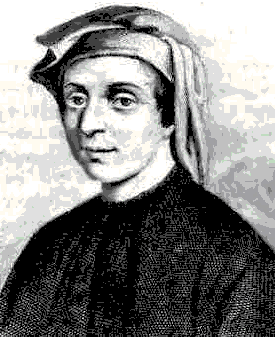|
|
The Fascinating Fibonacci Numbers |
|
|
|

You are about to meet the Marco Polo of the Mathematics world. Just like Marco Polo brought the food and culture of the Eastern world, this man brought the numbers and arithmetic of distant lands to Europe. His name is Leonardo Fibonacci of Pisa. Leonardo (1170-1250) was born in Italy, but through his travels abroad he learned of the Hindu-Arabic number system. These numerals, which we still use today, were introduced in his book Liber Abacci. The numerals quickly replaced the archaic Roman Numerals. Personally, I am very thankful for Leonardo's accomplishment; it is such a pain to add VCXMM to XXCMMII.
Legend says that Leonardo himself said that the Hindu Arabic numerals were so easy to understand that even a "blockhead" could understand this new system. From then on he took the pen name blockhead and signed his book with that title.
Fibonacci's book was not only about numerals, but also contained examples of arithmetic and word problems. One of the word problems was about rabbits. The problem goes like this...
A man put a pair of rabbits in a certain place entirely surrounded by a wall. How many pairs of rabbits will be produced in a year, if the nature of these rabbits is such that each month each pair bears a new pair of rabbits which from the second month onward become productive?



.
.
|
|
Thank you for visiting the Math Man's web page. Come back again. |
|
|
|




